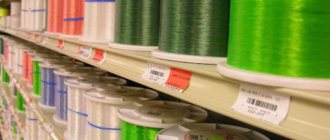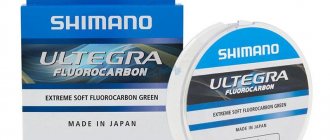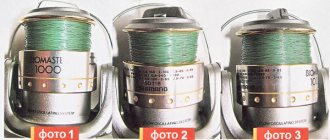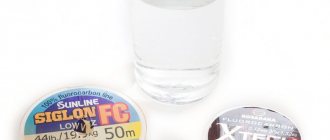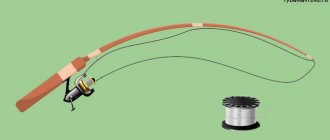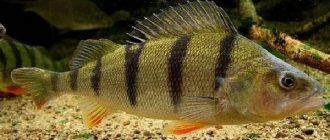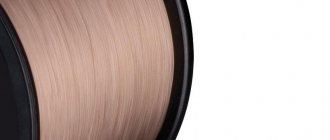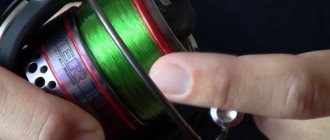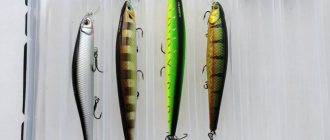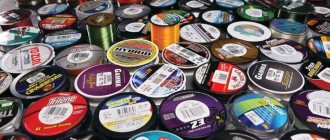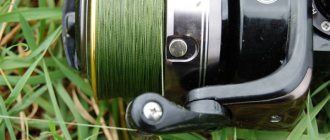Fishing line is an important element of fishing equipment, with the help of which all parts are connected into a single system. But the importance of this component does not make it any less fragile. Fishing line can become unusable with constant use, as well as with improper storage. In sport and amateur fishing, monofilament and braided fishing lines are used, each of which requires approximately the same, special treatment. So how do you store braided fishing line?
Raw materials for the production of wicker
Braided fishing lines are also called braids, cords, threads. Braid is a multi-strand thread that is produced by synthesizing a variety of new generation polyethylene fibers. Why new?
The first braids were made from aramid fiber of synthetic origin, which was distinguished by its high resistance to temperature and mechanical damage, resistance to chemical compounds and exorbitant price. It is precisely because of the last factor that this fiber did not find widespread use in the production of fishing lines. Polyethylene raw materials of that time were significantly inferior in characteristics to aramid.
With technological progress, polyethylene fiber has been so modernized that it has become the main synthetic high-tech raw material for the production of heavy-duty fishing lines. Fiber produces:
- Holland (“Dyneema”);
- USA("Spectra");
- Japan (“Toyobo”).
Use by degree of application
- As already mentioned, monofilament is a highly stretchable nylon thread that has knot-resistant qualities. Good to use for loose baits and mounting rotating spoons. This thread allows you to soften the workload on the reel because it absorbs the jerks of the fish. But it is very soft, which leads to rapid abrasion;
- Copolymer fishing line has a set of qualities that allows it to be used in various fishing conditions. It is used for jig fishing and hooking, as it does not tangle as much. A negative quality is the high load on the reel mechanism due to increased rigidity;
- High-polymer threads have a narrow specialization intended for any type of fishing. They are well suited as a winter fishing line, since their structure does not change with prolonged contact with cold water, they do not freeze, and they sink quickly.
And you need to wind it as shown in the picture below:
Types of braided lines
There are four times more companies (about 10) than the producers of raw materials themselves, which directly produce fishing line from purchased fiber, and do not simply unwind it into reels. Each company that produces fishing line bases its production on its own technologies, materials, and marketing schemes.
Braided fishing lines received a figurative name; the manufacturing method is not always associated with direct weaving. There are 2 ways to produce cord. The type of thread depends on the technology of weaving the material:
- Classic threads - this group is made by weaving microfibers into thin threads, then into larger ones. Hence the cords of different thicknesses and strengths. Sometimes bundles of fibers do not intertwine, but simply twist together. Lines produced using this method are less durable.
- Parallel threads (multi-filament) - the production technology of this group of cords does not involve weaving. Here the fibers are, as it were, enclosed in a shell, and inside it are sintered with an alloy of binding components. In this case, the fibers are arranged parallel to each other, maintaining a single structure due to heating and a special binder. Manufacturers of this type use a variety of alloys and methods.
Photo 1. One of the types of cord weaving.
Parallel cords, unlike classic ones, are very rigid and easily unravel, which is why they are wound under the very edge of the spool.
Characteristics of braids
Both groups of braided threads have the following features:
- Different diameter;
- Several degrees of strength;
- Various impregnating materials;
- Two types of sections - round and flat;
- Color design.
Photo 2. Another type of weaving.
Each angler decides what characteristics to buy a braided line, depending on the individual fishing process - the weight of the expected catch, the reservoir on which fishing will take place, etc.
Attention! Most fishermen argue that it is better to choose threads with a round cross-section. Flat cords have disadvantages: due to uneven winding on the spool, they get tangled, wear out faster, and “sail” during casting.
Analysis of fishing line qualities
To choose the right cord, you need to be guided by the specific features of the product: for example, the thread for the feeder and for the trimmer are significantly different from each other. But, all the same, you cannot choose a multifunctional tackle that will work in any conditions.
- The fishing line must be elastic, that is, have the qualities of compression and stretching.
- This type of line is usually used to equip spinning rods for fishing chubs and perch fish. Less springy and thick models of fishing lines are used for bottom fishing and hunting large fish.
- In addition, the thread must be wear-resistant. It must withstand the effects of sunlight and friction.
- Innovative technologies have also affected fishing, in particular fishing lines. Now they can last up to 700 hours.
- Another useful property of the cord is its weak “memory”. What is this? When a fisherman unwinds a fishing line (especially a thick and strong one), it curls with springs, making it difficult to cast. To find out the “memory” indicator, the fishing line is passed between the fingers before purchase. If it’s gone, then it’s better not to buy such a model of equipment.
- A quality closely related to “memory” is the flexibility of the line. The softer the thread, the less strong it is. Such models are good for long casts, but they are more likely to break. In addition, soft lines are less likely to curl. To soften the equipment, before casting it is moistened with water from the reservoir.
- Color also plays an important role. Modern manufacturers offer camouflage colors for fishing cords for different fish.
See also: Fly fishing: what a beginner needs to know
How to extend the life of braided fishing line
The most contradictory requirements are placed on fishing line. It should be as thin as possible, preferably invisible, but at the same time have a high degree of strength. Manufacturers are constantly working to improve their products. But the wear resistance of fishing thread depends not only on the factory quality, but on the frequency of use. And also, importantly, on proper storage of the fishing line when it is not used for a long time.
Factors that reduce the quality of fishing line:
- Exploitation;
- No drying after use;
- Nodes;
- Long-term, improper storage;
- Effect of ultraviolet radiation;
- Aging of material, etc.
It is believed that braided lines, unlike monofilament lines, are less susceptible to these factors. They are also not picky about storage conditions and correspond to their characteristics for a long time. But this is not entirely true. Any thing can maintain its quality longer if treated with care, fishing line is no exception.
Conditions for short-term storage of braid
The question arises, how to store fishing line between fishing trips? After use, the thread must be unwound, laid out on the ground, or better yet, on the grass in a shaded place, and left for at least 5 minutes. If time is limited, then the cord should be wound at least without tension, and thoroughly dried at home.
Advice! Experienced fishermen advise that after finishing fishing, be sure to air dry the fishing line for five minutes.
During the drying process, the taut line contracts, rendering the lower layers on the reel unusable. Braided thread, due to its rigidity and tension as a result of such drying, can cause significant damage not only to the lower layers, but to the spool and reel itself.
Attention! More scrupulous fishermen pass several times along the entire length of the fishing line with a cotton swab dipped in gasoline or glycerin.
Thus, the matte coating on the fishing line is removed, and the original glossy shine is acquired. The next time you use the line, sliding along the guides will be much easier, casting will be further, and thread twisting will be minimal. By the way, it is also better to clean the passage rings and treat them with alcohol. It is advisable to keep all elements of the gear clean.
It is recommended to promptly trim the worn, damaged end of the cord, and also swap the upper and lower parts.
Fishing Tricks
It is not difficult to buy a good fishing line, but storing it presents some difficulties. Time passes, and the fishing line, no matter how strong it was at the time of purchase, loses its strength. We bring to your attention a few simple tips that will help maintain your fishing line's good original qualities.
Many experienced fishermen are in the habit of changing the line on their spools after it has been used in ten to fifteen fishing trips. Well, the reason is clear: rather than saving on fishing line, risking losing expensive and already tested baits, it is better to spend two dozen dollars on a new fishing line. Of course, fishermen who fish occasionally have no need to make such expenses. For this category of people, it wouldn’t hurt to learn some of the basics of fishing line storage.
When you come back from fishing, unwind the line from the spool and dry it. How to dry? On a flat piece of land, stretch the fishing line, allowing it to air for about five minutes, no more. The coiled line should not be dried, because it will dry unevenly, and the upper rings will tighten the lower ones, destroying them. In addition, after drying the unwound fishing line, twists, if any, are eliminated.
Intense sunlight has a detrimental effect on the structure of monofilament lines. Therefore, it is necessary to store the fishing line in a dark place. The optimal storage temperature for fishing line is from 12 to 25 degrees above zero. Lower temperatures negatively affect not so much the strength of the fishing line as its flexibility.
The recommended air humidity for long-term storage of fishing line is not lower than 60%. This is high humidity; you can ensure it in the place where the fishing line is stored as follows. The fishing line is placed in a tightly closed jar, in which, in addition to the fishing line, a jar of water is placed. About once a month the water in the jar is topped up.
Another and easier way to store fishing line is in the refrigerator. You need to store the fishing line in the vegetable department, this will be the most suitable temperature for storing it. Place the fishing line in a plastic bag and, after consulting with your family, feel free to put it in the refrigerator, as was said. Here it can be stored for many months without losing strength and flexibility.
After a certain time spent fishing, it should be cut off by removing several meters from the spool. It is this part that is most exposed to stress and gradually loses its former qualities. This procedure will eliminate the risk of line breakage and loss of gear during your next fishing trip.
Before the start of a new fishing season, it is necessary to rewind the fishing line on the reel. As a result of rewinding, part of the fishing line that was used last season and experienced stress will be on the bottom, and the part that was practically never used, even during long casts, will be on top. This means it will reliably serve faithfully.
Not enough line on the bobbin results in a lot of free space left to the edge of the spool. This has a bad effect on casting distance. The distance between the edge of the spool and the edge of the spool of fishing line should be about one millimeter. This can be achieved by first winding old fishing line or electrical tape onto the reel under the working line.
When under load, the line most often breaks at the knots. There is a little trick to help avoid this trouble. The knots must be made multi-turn and moistened with water before tightening. Then the knot turns out to be relatively even and deforms the fishing line to a lesser extent. In addition, after fishing three kilograms of fish, it is recommended to tie the knots. Because the negative effect of the so-called “aging” is triggered.
Treat the fishing line carefully and carefully. The few minutes of work required to take care of it will help you save money on a purchase that will add to your lure collection.
